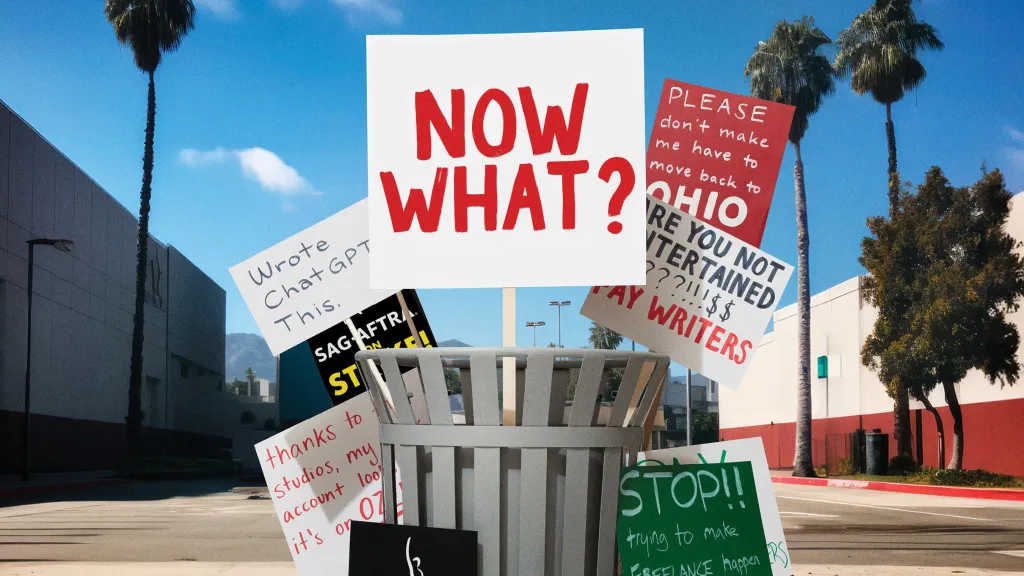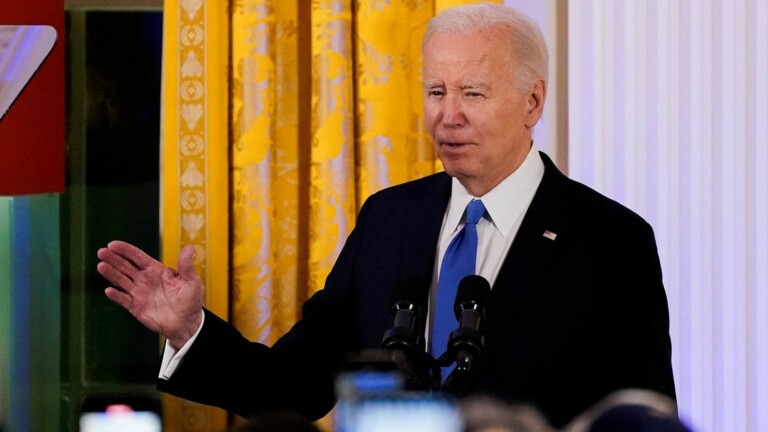After a 118-day strike that brought the U.S. entertainment industry to a standstill, Hollywood is poised to return to action.
The tentative agreement between the Screen Actors Guild-American Federation of Television and Radio Artists (SAG-AFTRA) union and studios and major media companies ended the strike on Thursday, and breathed new life into the 134 billion U.S. dollars American movie and television business.
Another strike, by the Writers Guild of America (WGA), also a powerful Hollywood labor union representing more than 11,000 screenwriters, ended in September after an agreement was reached by the writers and major studios.
While the strikes are over, their economic and health impacts are far from resolved, leaving industry professionals and stakeholders concerned about the road to recovery, with financial repercussions and underlying issues expected to linger well into the future.
Analysts have projected that as the strikes’ impact rippled beyond Hollywood, they leeched an estimated 5 billion dollars from California’s economy.
Fiscally, the negotiated settlement marked a significant victory for SAG-AFTRA, which represents approximately 160,000 media professionals.
Led by Fran Drescher, known for her role in “The Nanny,” the union took an aggressive stance in the talks and weeks of negotiations resulted in the studios responding to the guild’s counteroffer with a self-described “historic” package.
The package included substantial wage and bonus increases, improved compensation for streaming content, better healthcare funding, and safeguards against the use of artificial intelligence (AI).
But, despite the gains made by SAG-AFTRA, there are concerns about the changing economics of the entertainment industry. While actors may secure higher pay, the reduced volume of work could offset these financial benefits. Media companies, grappling with losses related to streaming, have scaled back their content production.
For instance, Disney’s Hulu is set to produce about a third fewer shows in 2024 compared to 2022. And Sony postponed the release of its collaboration with Marvel Studios “Kraven the Hunter” to 2024, and delayed its next “Spider-Verse” movie.
“Due to delays in production and constraints in promotion activities, we are seeing negative impact such as a delay in the release of certain motion pictures and a delay in the delivery of television productions,” revealed Sony executives on an earnings call on Thursday. “We have incorporated the impact that can be assumed at the present time into our forecast for the fiscal year.”
AMC Entertainment, a major player in the theater industry, expressed concerns about the fallout from the strikes. The company reported earnings after the strike’s resolution and saw its shares tumble by more than 10 percent in the wake of the results. In response to the challenges posed by the strikes, AMC announced plans to sell more shares through a secondary offering.
Warner Bros. Discovery, another major player in the entertainment industry, faced its own set of challenges due to the strikes. The company’s CFO, Gunnar Wiedenfels, pointed out that the strikes had a significant impact on the performance of its studios, particularly in the television sector.
He said the disruptions caused by the strikes affected the production and delivery of TV content, leading to a decline in TV revenues. While the company experienced strong performance in films and games, the negative effects of the strikes cast a shadow over its financial prospects.
“It is becoming increasingly clear now that much like 2023, 2024 will have its share of complexity, particularly as it relates to the possibility of continued sluggish advertising trends,” Wiedenfels said. “We don’t see when this is going to turn.”
So, post-strike, the potential for long-term success may be tempered by the economic realities facing the industry. Hollywood actors may find themselves earning more for their roles, but the overall volume of work may not rebound to pre-strike levels.
The shift towards digital platforms and changing audience preferences are reshaping the entertainment landscape as well, and the strike did not result in the union gaining a percentage of streaming revenue, as studios bargained for a new residual payment based on performance metrics instead.
And though the strike achieved some protections for creatives against the encroachment of AI on their jobs, AI’s threat to traditional roles and compensation structures for actors and writers alike is unlikely to go away as technology continues to surge ahead in all sectors.
The way forward for SAG-AFTRA and the entertainment sector as a whole will require adapting to the changing landscape, embracing technology while safeguarding the rights and livelihoods of its members.
As the industry embarks on this new chapter, it remains to be seen how the balance between compensation, work opportunities, and technological advancements will shape the future of Hollywood.
The strike’s conclusion signifies a return to production, but it also marks the beginning of a broader conversation about the industry’s sustainability and resilience in a rapidly changing world.







